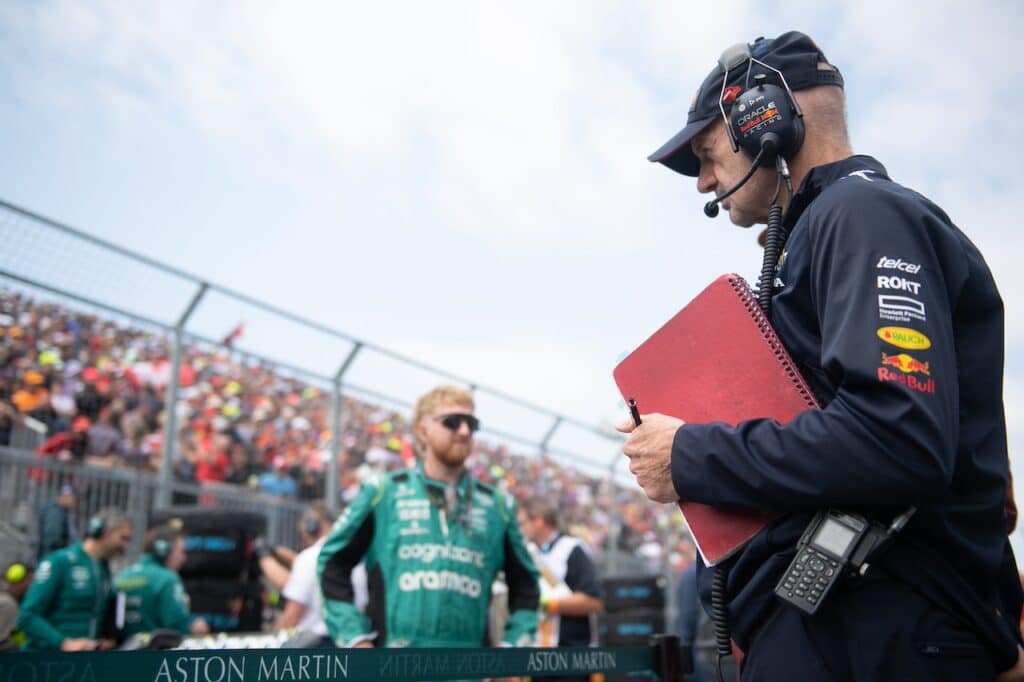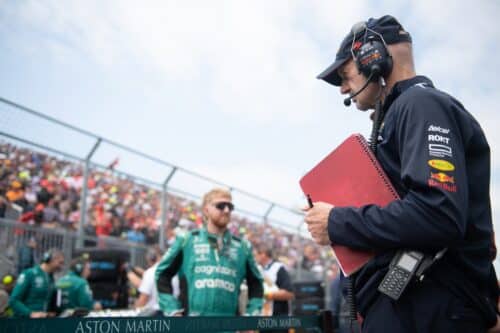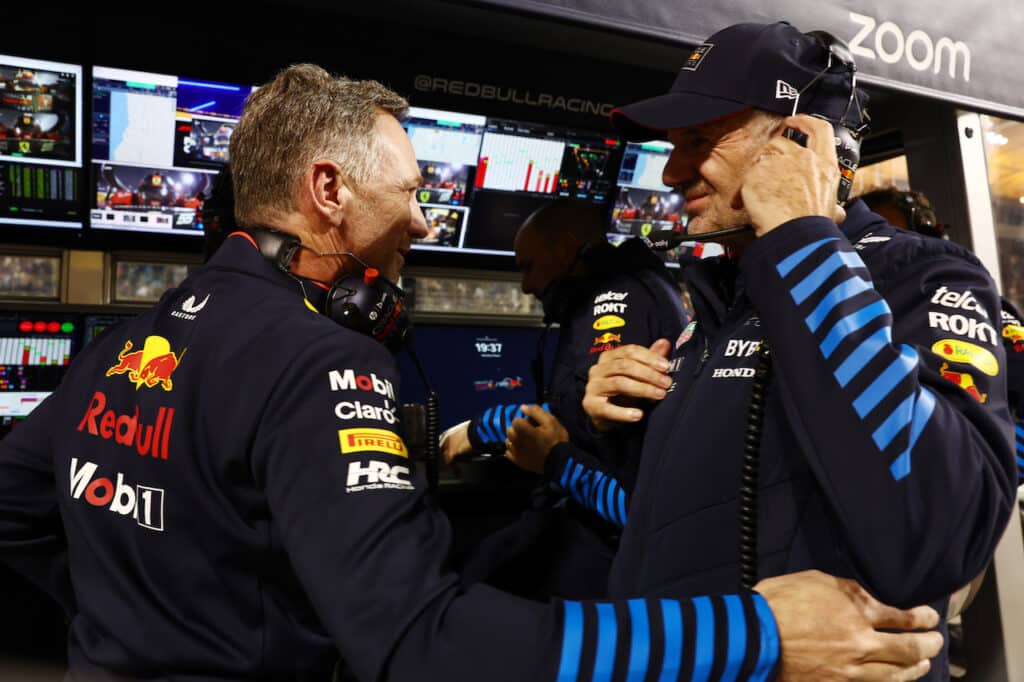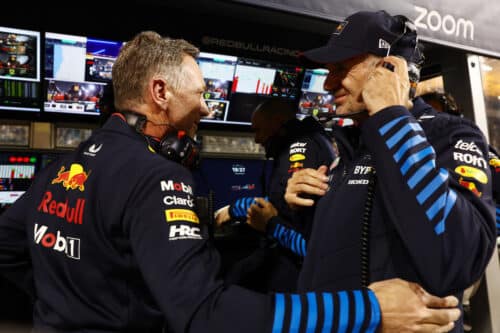Chinese GP: Technical Analysis
Here are the main technical innovations seen in Shanghai

The Chinese GP re-established the values on the field that had been seen during the winter tests and at the first race of the season in Melbourne. The Mercedes W06 dominated both qualifying and the race on a track where the rear tires were not excessively stressed, demonstrating all its true potential. Indeed, in some phases of the race, Hamilton seemed to run to save money to conserve his tires in the best possible way and not put excessive stress on the car.
Let's analyze the main technical innovations that the various teams have brought to this track.
Mercedes
The first technical developments on the car were introduced on the W06 Hybrid. In China, since free practice, both drivers have used the new front wing, which, compared to the previous version, has been revised in the outermost part which borders the bulkheads (endplate). In this area the shape of the additional flaps has been changed and the connecting part between the additional flaps and the actual flaps has been modified. Two very distinct areas have been created in the new wing:
– a more internal one designed to generate aerodynamic load and to make the rest of the car work well;
– an external one necessary to avoid the increase in resistance to progress created by the tyres.
The two areas are separated by a clear "step" and no longer (partially) smoothly connected as on the old version. There are five blowholes left. The flaps also seem to have been slightly revised and now have a slightly straighter profile.
This wing creates some interesting counter-rotating vortices to try to seal the wing with the ground and therefore generate more downforce.
At the rear, a revised wing has been used compared to the one used at the start of the season. As you can see from the comparison below, the mobile flap of the rear wing has been "cut" in the external area where it connects with the vertical fins.
A lower rear wing compared to those we saw in the first races to improve top speed given that, in the previous races, the W06 had suffered from the choice of the Anglo-German engineers to use short ratios to favor the traction efforts at at the expense of maximum speeds. This weekend, also thanks to these changes, the Anglo-German car has always been among the cars with the highest maximum speed in all sectors of the track.
Ferrari
Compared to the Malaysian GP, Ferrari showed up in China with very few significant innovations on the car, even if, from a careful analysis, some small adjustments were made to the aerodynamic look of the team.
In the central area of the diffuser, the small vortex generators, now used by almost all the teams, have been enlarged in size. Vortex generators serve to keep the flow on the diffuser stationary and to “mix” the flow inside the boundary layer with the flow outside the boundary layer in order to re-energize it. In this way it is possible to delay the flow separation effects (hence the stall and dramatic increases in resistance). Vortex generators in general increase drag a bit because they create vortices, but they prevent drag from increasing too much under certain conditions due to separation.
comparison of vortex generators
The end part of the bonnet has been slightly changed and now has a more enveloping shape around the exhaust terminal. The temperatures expected this weekend are low and, therefore, Ferrari has closed the rear vents slightly to maximize the aerodynamic efficiency of the car.
On the SF15-T, both drivers used the "closed" rear bonnet version to favor aerodynamic efficiency and have a cleaner flow of air in the rear area.
During free practice, different setups were used on Raikkonen's and Vettel's cars. Both drivers used the same rear wing specification, but the Finnish driver ran in both sessions with a more loaded main profile than his teammate. Vettel achieved excellent top speeds due to the lower load on the rear axle but in the driven sectors, where downforce is important, he felt a certain gap from his teammate.
After analyzing the data, the engineers decided to use the aerodynamic setup with more load at the rear, tested during free practice by Kimi Raikkonen, on both cars. Neither driver used the rear monkey seat.
Williams
Williams had brought a new rear bodywork to improve the aerodynamic efficiency of the car.
Despite the low temperatures, Grove's engineers chose to use the "cut" rear bodywork already seen in Malaysia and Australia for qualifying and the race. Choice made to guarantee the correct cooling of the Power Unit to the detriment of the aerodynamic efficiency of the FW37.
Williams' rear outbursts – Qualifying
The new front wing, of which there are no images available, was used and destroyed by Massa during free practice. Williams had brought only one example of this new front wing for this GP. Most likely, from the next round in Bahrain, we will see this new aerodynamic component on the track.
Red Bull
During Friday's free practice, a new front wing was used on Ricciardo's car. As you can see from the comparison below, in the version used by the Australian pilot, all the blowholes on the vertical fin have been removed and the terminal part has also been modified.
The leading edge of the main profile has also changed and is much more curved in the area connecting it to the enplates. With these modifications the Milton Keynes aerodynamicists have tried to increase the load on the front end and improve the management of the air flows which are directed towards the outside of the car and under the floor.
For qualifying and the race, both drivers used the new front wing specification, demonstrating that the comparative tests carried out during free practice gave the engineers the results hoped for.
At the rear, as usual, to overcome the power problems of the Renault Power Unit, a rather plain wing was used.
Lotus
Lotus had brought some modifications to the front for this race which were not used for qualifying and which will be tested again in Bahrain.
In the new wing, as you can see from the comparison below, the shape, in the terminal part, of the third and fourth additional flaps has been changed. In the previous version they had a square shape while now they are very tapered at the end. Modification aimed at increasing the downforce load on the front end as the surface area on the wings that generates load has been increased.
After carrying out some comparative tests, the "old" version of the nose and front wing was used for qualifying and the race. At the rear, unlike what Mercedes, Ferrari, Williams and Red Bull did, both drivers used the Monley seat.
Clean
The first aerodynamic developments were seen in China on the C34. A new version of the front wing has been introduced which differs in many areas from the one used during the winter tests and in the first season races.
Here are the main news
upper flaps changed in shape and size;
flow diverter located on the main profile, anchored via a neutral flap to the upper flaps, to divert the air flow towards the outside of the front tyres.;
the blowing on the main profile changed and lengthened;
the additional flaps have changed both in shape and size
In addition to the changes visible in the front area, the wing, as you can see below, thanks to the side images, has also been modified in the endplate area. The fin, located right on the vertical fin, has been shortened and has a shape useful for diverting the air flow upwards above the front tires. In the terminal part of the endplates the vertical blowing has been removed and a small air passage has been created from the area of the additional flaps towards the outside of the wing (Mercedes style).
For qualifying and the race, Sauber differentiated the aerodynamic configuration between the two drivers. On Nasr's single-seater, as you can see from the image below, the new version of the front wing was used.
The "classic" front wing was used on Ericsson's single-seater
McLaren
After the large aerodynamic package introduced in Malaysia for the Chinese trip, McLaren has also introduced updates on the MP4-30. Many of these were brought to the Honda Power Unit which, compared to what was seen in the first two races of the season, seems much improved.
A new version of the diffuser was brought, initially planned for the Bahrain GP which was used exclusively by Jenson Button. Compared to the version used by Fernando Alonso, the vertical drifts in the external area of the diffuser were changed to improve the extraction of air and increase the aerodynamic load at the rear. McLaren also uses small vortex generators in the central area.
comparison @Albrodpul
At the front, a small update has been made to the front brake air duct. A "curl" structure has been created in the lower part to improve the flow of air flows towards the rear. This is a very delicate area of a car as the rolling of the tires creates large vortices which disturb the aerodynamics of the entire single-seater.
Eng. Cristiano Sponton
if you want to always be updated on our news
Follow us here




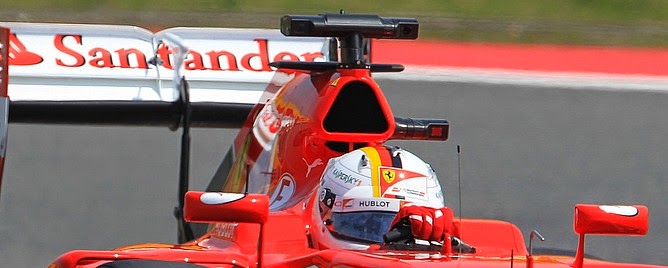
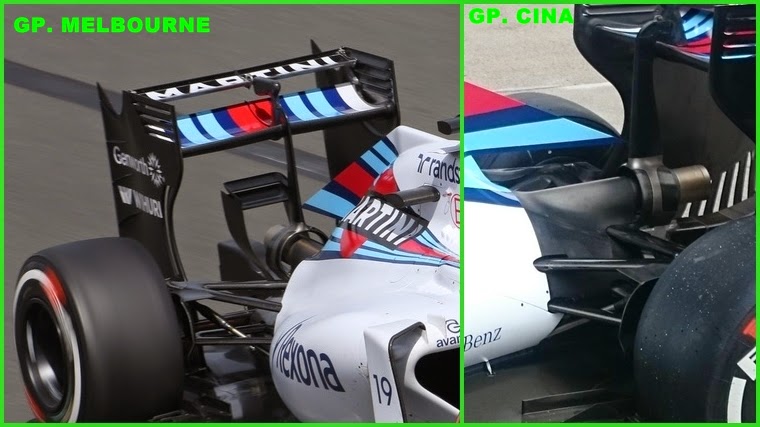
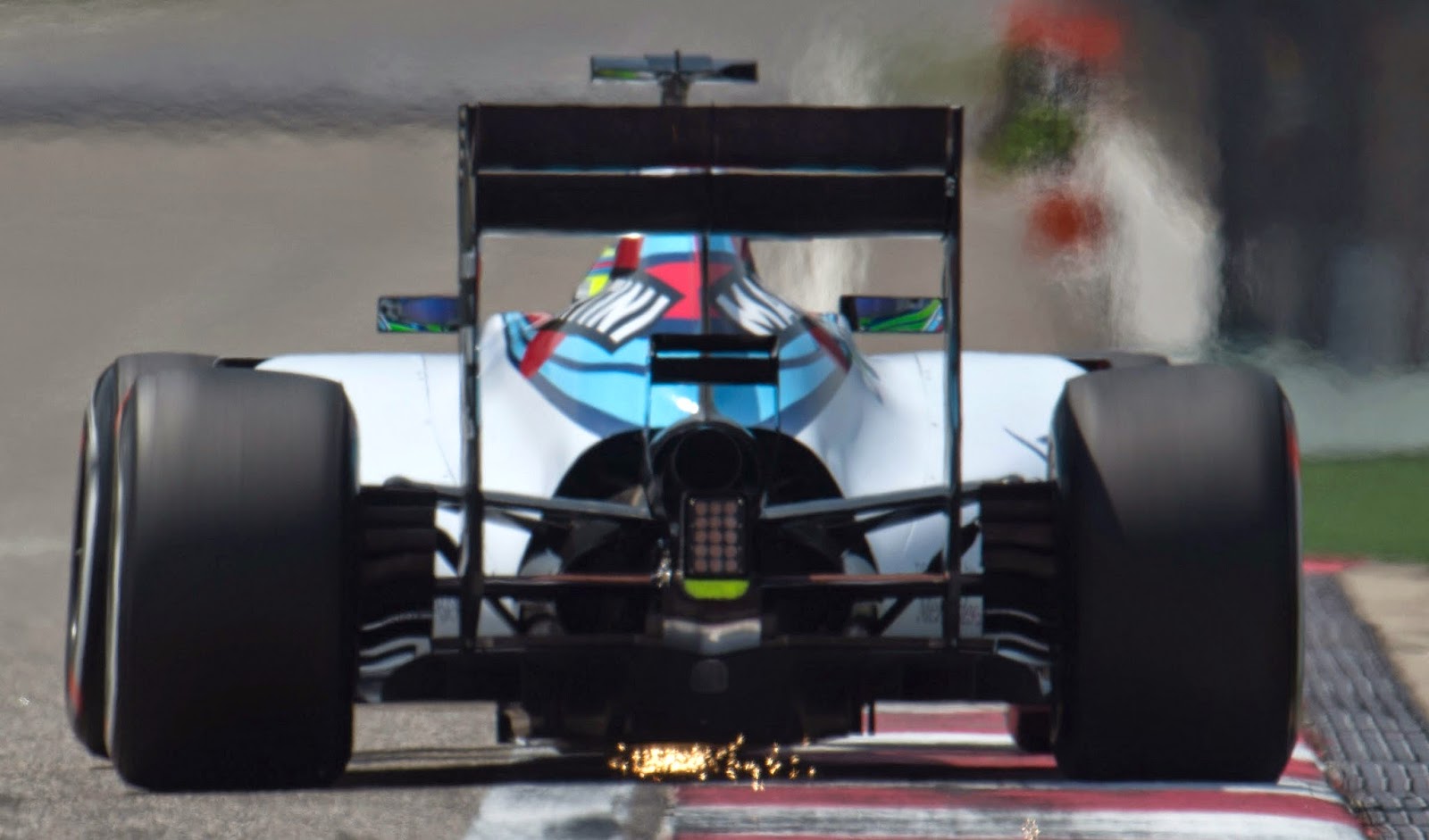

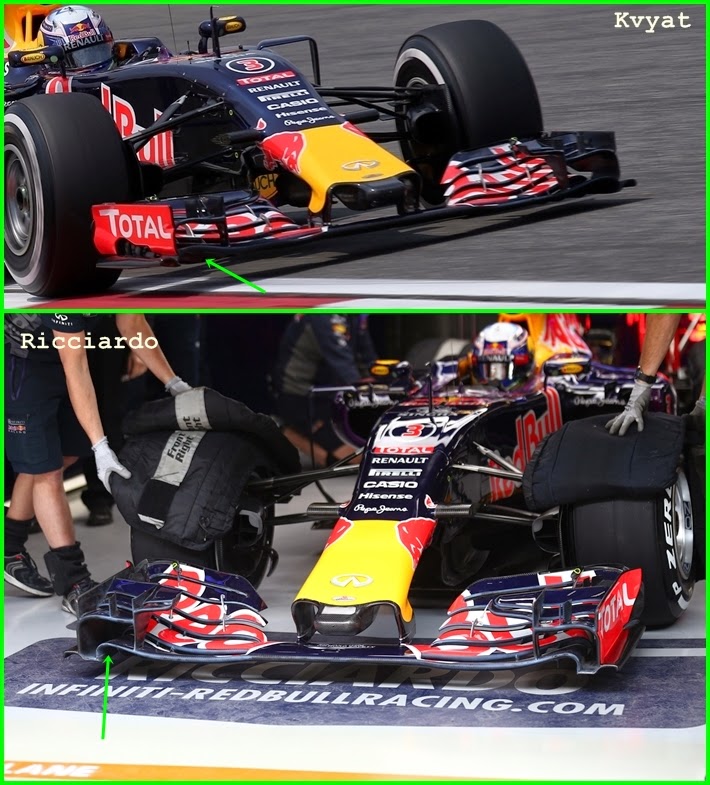

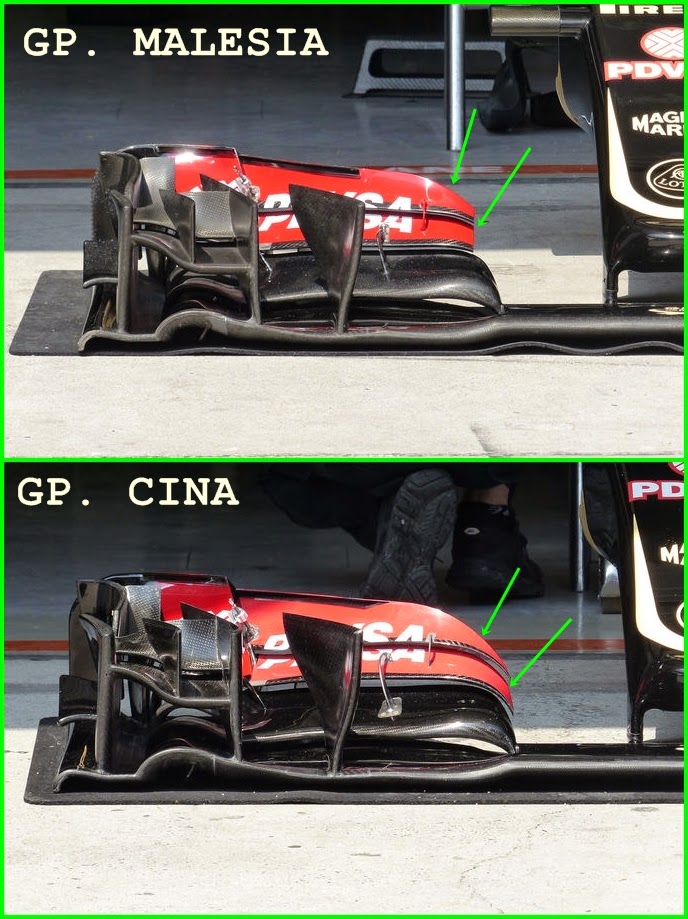
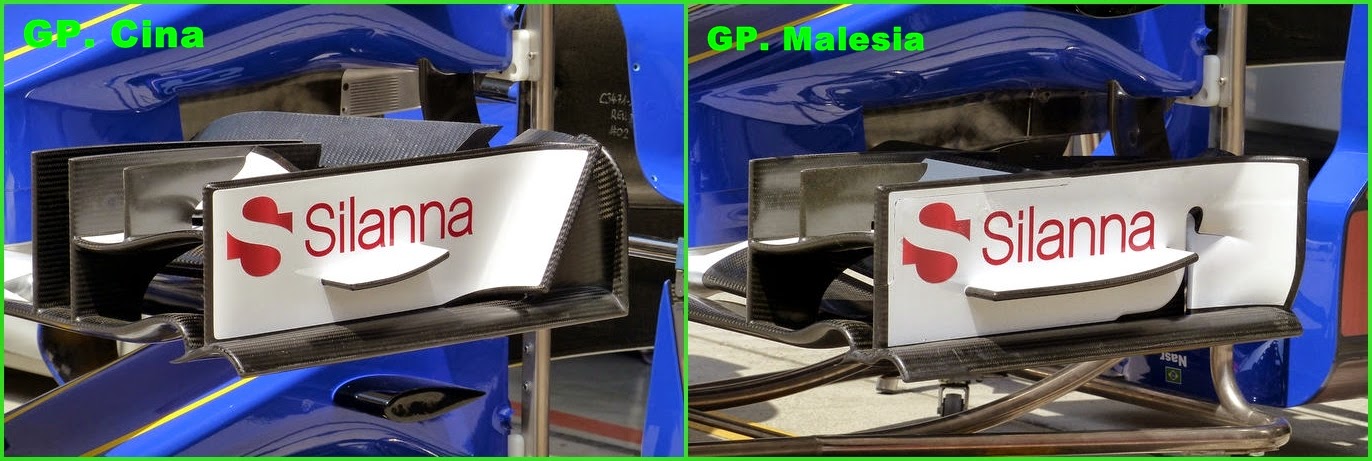


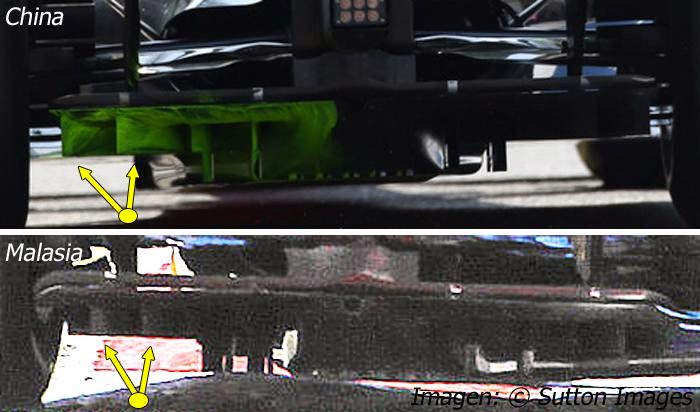
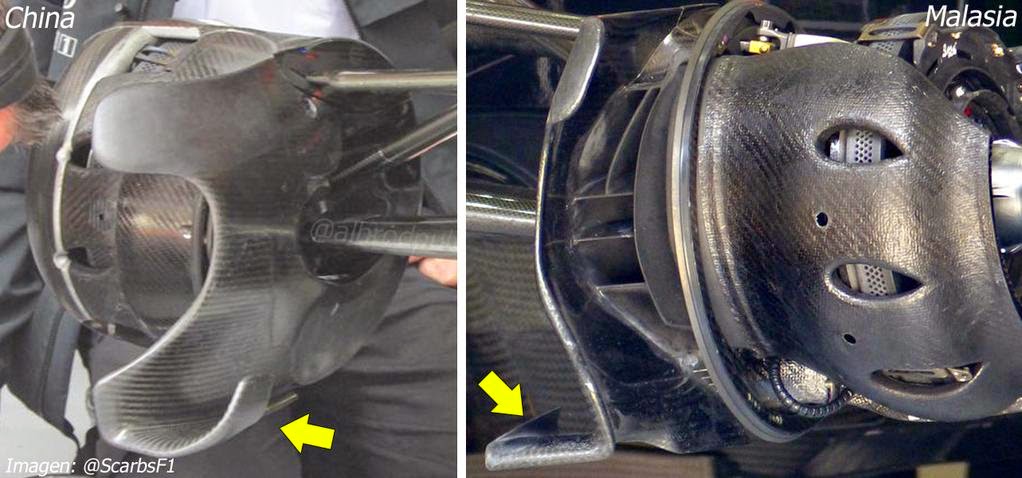
![F1 | Ferrari: here is the new livery for the Miami GP [PHOTO AND VIDEO]](https://f1grandprix.motorionline.com/wp-content/uploads/2024/05/livree-ferrari-gp-miami-2024-1024x691.jpg)
![F1 | Ferrari: here is the new livery for the Miami GP [PHOTO AND VIDEO]](https://f1grandprix.motorionline.com/wp-content/uploads/2024/05/livree-ferrari-gp-miami-2024-500x338.jpg)
